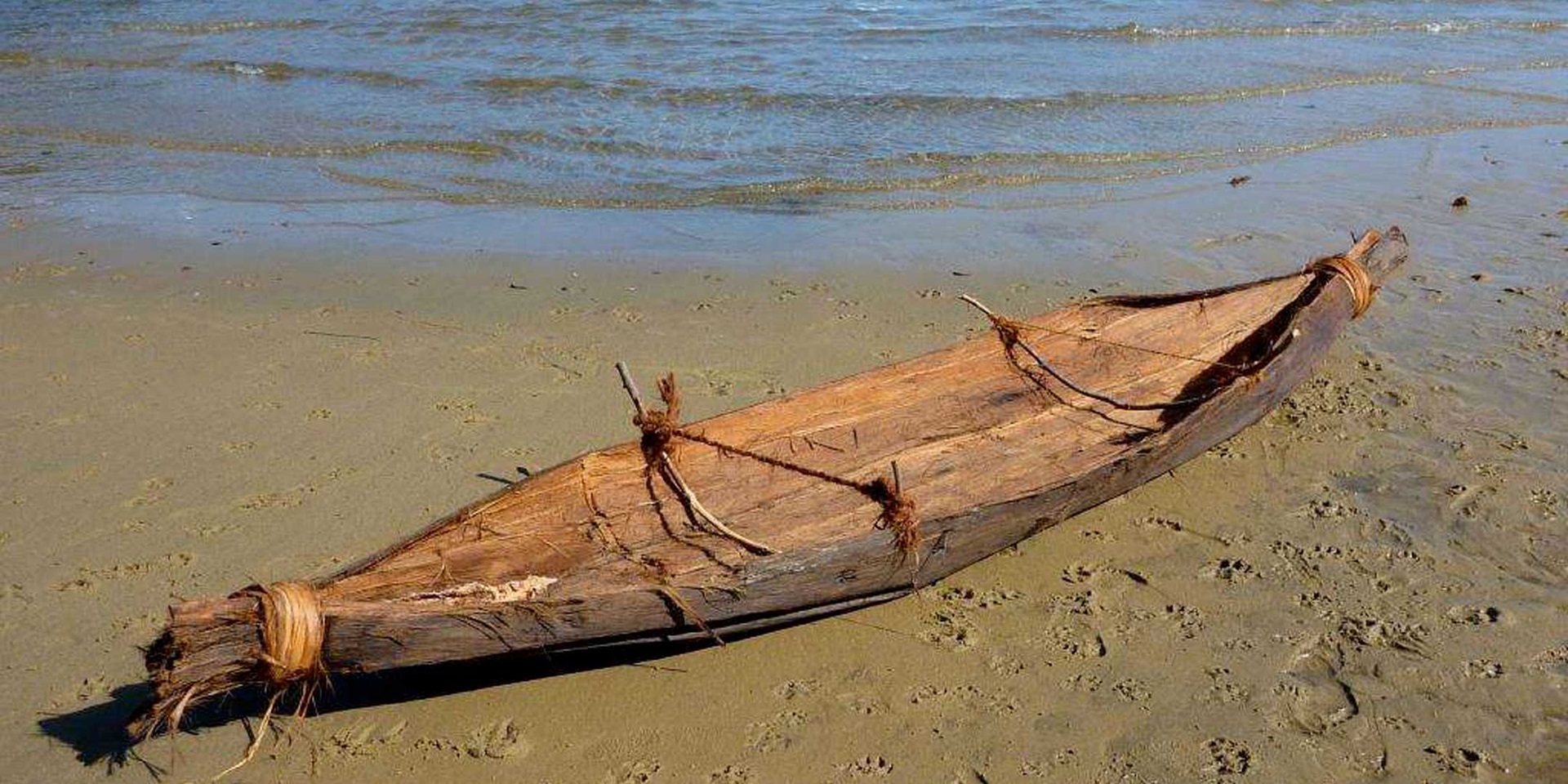Overview
Aboriginal and Torres Strait Islander people’s continuing connection to the sea is recognised in the abundance of the diverse watercraft used. The crafts reflecting deep traditional knowledge of, and connections to the environment.
Students undertake inquiry into Indigenous watercraft. They use sources from the Museum’s Collections and from the ABC My Place series on the use, designs and method of construction to inform the inquiry. Students have the option of conducting scientific inquiry by building scale models of Indigenous watercraft to build awareness and appreciation of, and respect for, Aboriginal and Torres Strait Islander histories and cultures.
Key inquiry question:
How does Indigenous watercraft further reflect Aboriginal and Torres Strait Islander connections with the sea?
 Source 1: Building a nawi, photo courtesy David Payne
Source 1: Building a nawi, photo courtesy David Payne
Examine the following primary and secondary sources from the Museum’s Collections.
Guide students in analysing the values and limitations of the sources for informing the inquiry.
- Source 2: Indigenous people fishing with spears, two in a canoe | Richard Browne. A painting by convict artist Richard Browne. He was born in Dublin in 1771 and was sent to Australia in 1810 possibly for forgery. His paintings focus on Aboriginal people of the Sydney area.
- Source 3: Djarrwark Monuk | Gawirriṉ Gumana. A bark painting by Gawirriṉ Gumana leader of the Dhalwangu clan. He was one of the most senior Yolngu and became renowned for his artwork and knowledge of traditional culture and law.
- Source 4: Model of a Torres Strait canoe | George Crowley. A model made in 1988 from wood, bamboo, natural fibers.
Use the following sources and activities to conduct research into Indigenous watercraft.
- Australia’s first watercraft. A blog by David Payne, Curator of Historic Vessels at Australian National Maritime Museum. Identify the canoes from the sources and record information about their design and production.
- Watch the ABC ME My Place clip Water from ABC My Place For Teachers to observe Bunda and his brother and the way each collect and carry water. Record the problem that was faced and the solution Bunda designed and implemented.
- Read about the significance and history of the model in source 4. Listen to the song My Island Home by Christine Anu online. Read the lyrics to identify the intended purpose of the song. Anu is a Torres Strait Islander and her father is from Mabuiag Island. Explain using evidence from both sources, the relationship between Torres Strait Islander peoples and the sea.
Analyse your findings by comparing the differences and similarities in use, design and construction.
Evaluate the design and construction of the canoes and explain how each reflect the environment in which it is used?
Reflect on the need for teamwork in creating solutions.
Conduct a scientific inquiry into the design and construction of a canoe of your choosing.
Conduct your tests using small scale models using sustainable materials. Record the process as you conduct research, produce, implement, test and evaluate the design. How successful was the canoe you launched? What improvements could be made?
Write a report on Indigenous watercraft and the way they represent Aboriginal and Torres Strait Islander people’s connections with both the sea and the environment.
